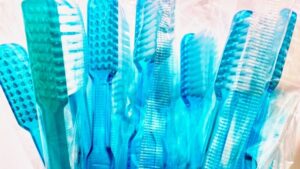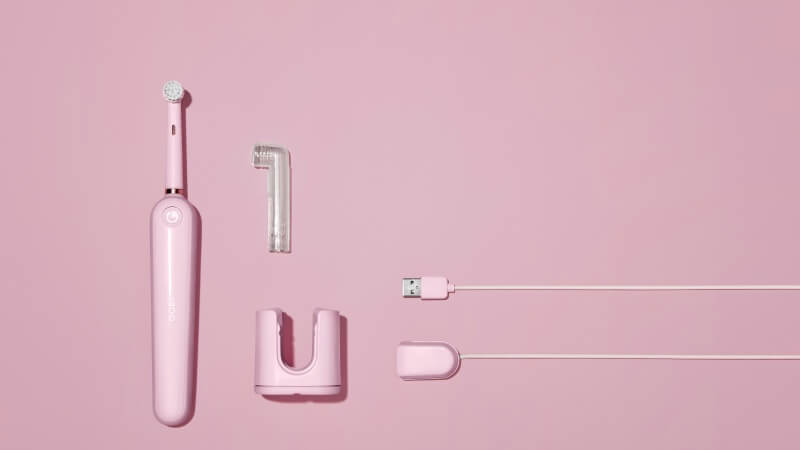
Sonicare Toothbrush Not Charging:Reasons And Solutions
We are often contacted by customers complaining about a Sonicare toothbrush not charging. A charging issue is a common problem and can sometimes be misdiagnosed

Tartar and plaque, known as dental calculus, form on teeth when plaque accumulates and starts to harden. Not only is tartar visually unappealing, but it also poses a significant risk to both your teeth and gums over time.
Regular dental check-ups in Ellicott City, MD, are essential for managing plaque and tartar. However, if you’re looking to tackle tartar and plaque at home without a dentist’s visit, this guide will show you how.
To effectively remove plaque and tartar buildup on your teeth, it’s crucial to brush twice daily using fluoride toothpaste. Additionally, daily flossing and using an antiseptic mouthwash are effective in combating bacteria in those hard-to-reach spots. Home remedies, like brushing with baking soda or rinsing with a vinegar and water solution, can also be beneficial.
This page provides valuable tips on removing plaque buildup and preventing tartar formation without needing a dentist’s intervention.
Maintaining good oral hygiene by cleaning your teeth twice a day and regular dental visits is crucial. But if you’re unable to see a dentist or wish to maintain excellent dental health between check-ups, these steps will help your teeth feel remarkably clean.
Opt for an electric toothbrush featuring a small, round head for individual tooth cleaning and reaching in-between spaces. A 2015 study highlighted that while manual and electric toothbrushes both remove plaque, power toothbrushes, particularly those with counter-rotational and oscillating-rotating heads, are more effective in reducing gingival bleeding and inflammation.
Fluoride fortifies tooth enamel against acids that cause decay. As a naturally occurring mineral, fluoride has been consistently shown to combat dental cavities.
Toothpaste fluoride levels vary; adults and children over three should use toothpaste with 1,350-1,500ppm fluoride.
For children, select age-appropriate toothpaste to ensure correct fluoride levels. Consult a dentist for the best toothpaste choice for your family.
While two-minute brushing is standard advice, many people brush for only around 45 seconds. Plaque removal efficiency increases with brushing duration. Research indicates that brushing for three minutes can remove 55% more plaque than brushing for just 30 seconds.
Studies show that combining flossing with toothbrushing significantly reduces mild gum disease more than brushing alone. Flossing cleans hard-to-reach areas between teeth, and interdental brushes, resembling tiny mascara brushes, further clean between teeth and gums.
Antibacterial mouthwash offers several benefits: freshening breath, reducing plaque, dislodging stubborn food particles, and lowering cavity risk. However, using mouthwash immediately after brushing can wash away beneficial fluoride. Instead, use it during the day, like after snacks or meals.
Adhering to these five steps will ensure your teeth remain exceptionally clean and healthy between dental visits.
Note: Avoid using home tartar removal tools like tartar scrapers. Dentists undergo extensive training to safely use such equipment, and untrained use can lead to infections or mouth injuries.
There are several effective natural methods to remove plaque build-up, a precursor to tartar, using common household items. Keep in mind, while these remedies are beneficial for oral health, they may not have the most pleasant taste!
White vinegar, known for its strong taste, may not be the most pleasant to gargle, but its antibacterial properties can help prevent plaque and tartar. Simply mix two teaspoons of white vinegar with half a teaspoon of salt in a small glass of water. Stir well and rinse your mouth with this solution up to twice daily.
Baking soda not only helps in whitening your teeth but also neutralizes acids that cause cavities. It’s a mild abrasive, often found in toothpaste, effective in removing plaque.
Create a paste by mixing a few drops of water with half a teaspoon of baking soda. Gently brush your teeth with this paste for a minute using your toothbrush, then rinse thoroughly.
Aloe vera, a plant with numerous health benefits, is also beneficial for your teeth. Combine a teaspoon of aloe vera gel with four teaspoons of glycerine (a common toothpaste ingredient), five tablespoons of baking soda, a drop of lemon essential oil, and a cup of water. Use this mixture to brush your teeth and gradually remove plaque and tartar buildup.
Preventing tartar and plaque buildup hinges on maintaining proper dental hygiene, as previously mentioned, along with regular dental checkups. However, diet also plays a crucial role in keeping these dental issues at bay.
Minimizing sugar and starch intake is key to preventing plaque formation. Oral bacteria thrive on sugary and starchy foods, leading to plaque, which gives that familiar fuzzy feeling on teeth.
Regrettably, many of our favorite foods are also favorites for bacteria. Particularly harmful are sticky sweets and savory snacks that linger between teeth. Reducing consumption of the following, or brushing after eating them, can mitigate plaque risk:
Beverages can also be problematic for plaque formation. Fizzy drinks, alcoholic beverages (which dry out the mouth), fruit juices, and carbohydrate-rich sports drinks are all significant contributors to plaque buildup.
In addition to the aforementioned strategies, it’s vital to emphasize the importance of regularly changing your toothbrush, particularly the heads of electric toothbrushes, as a critical aspect of maintaining oral hygiene. Over time, the bristles of a toothbrush can become bent and worn, diminishing their effectiveness in cleaning. This wear and tear can significantly reduce the toothbrush’s ability to remove plaque and tartar.
Additionally, consider using a toothbrush sanitizer. A toothbrush sanitizer:
In summary, tackling tartar and plaque effectively involves a multifaceted approach. Incorporating daily practices such as using an electric toothbrush, fluoride toothpaste, dental floss, interdental brushes, and antibacterial mouthwash plays a pivotal role in maintaining oral hygiene.
Complementing these with natural methods like rinsing with vinegar and water, or brushing with baking soda and aloe vera, can further aid in plaque control.
Diet adjustments to reduce sugary and starchy foods, along with the regular replacement of toothbrushes and the use of a toothbrush sanitizer, are equally important in preventing tartar and plaque buildup. By adhering to these guidelines, you can maintain a healthy mouth and keep tartar and plaque at bay.


We are often contacted by customers complaining about a Sonicare toothbrush not charging. A charging issue is a common problem and can sometimes be misdiagnosed

Opting for an electric toothbrush for sensitive teeth can help alleviate discomfort and further protect against gum recession. But which model is ideal for those

Have you learned how to use an electric toothbrush? It’s crucial to know not just for electricity but for any toothbrush type. Even though electric

Knowing how often change toothbrush head is crucial, just like replacing a manual one. The electric brush may last, but its head won’t remain effective

Tartar and plaque, known as dental calculus, form on teeth when plaque accumulates and starts to harden. Not only is tartar visually unappealing, but it

We are often contacted by customers complaining about a Sonicare toothbrush not charging. A charging issue is a common problem and can sometimes be misdiagnosed

Opting for an electric toothbrush for sensitive teeth can help alleviate discomfort and further protect against gum recession. But which model is ideal for those

Have you learned how to use an electric toothbrush? It’s crucial to know not just for electricity but for any toothbrush type. Even though electric
Copyright © 2025 toothbrushsanitizerholder. All Rights Reserved.